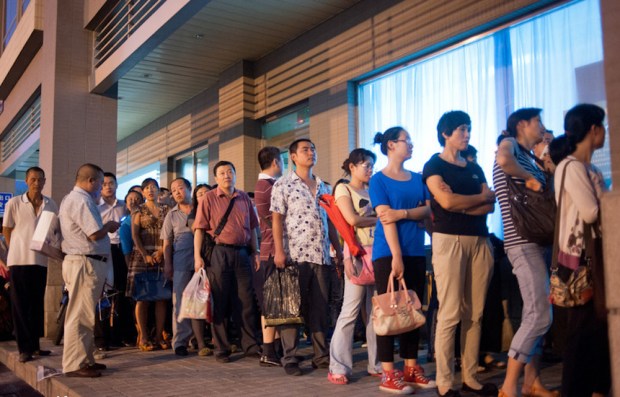Medical Tourism Explodes For Wealthy Chinese Patients

While healthcare availability is a topic of great debate in the United States, the quality of healthcare on offer is generally not. So when Chinese citizen Guo Shushi’s stomach cancer was incurable in China and quickly killing him — Guo, with the help of a company that specializes in helping Chinese customers seek medical treatment abroad, was in Dana Farber in Boston being treated with an immunotherapy drug not currently available in China.
“When I arrived, I could feel how large the gap was,” said Mr. Guo of the difference in care.
Bridging the gap, however, was not inexpensive — all in all, Guo paid $220,000 out of pocket to survive stomach cancer.
China’s healthcare system is well known to be fraught with access trouble (and quality issues) — but those issues, it seems, are affecting China’s growing upper class less and less as they can seek foreign treatment for medical troubles.
Medical tourism is not a new idea — though in the past it has been one associated with first world medical tourists trying to save costs on non-critical work like plastic surgery or dental treatments. Chinese medical tourists, on the other hand, are not looking to save money so much as they are hoping to save themselves from the medical outcomes of a developing world healthcare system.
All in all, Chinese nationals took 500,000 outbound medical trips last year, a fivefold increase from the previous year according to Ctrip.com International, a Chinese travel booking company which offers medical travel on its website.
“China is among the countries where we have seen the greatest growth in recent years,” Dr. Stephanie L. Hines, the chairwoman of executive health and international medicine at the Mayo Clinic, said in an email.
Chinese citizens theoretically receive cradle-to-grave healthcare. However, with too many citizens, not enough doctors and even fewer hospital beds, that care is not incredibly highly rated: China’s healthcare system ranked 92 out of 188 countries, after Cuba and Mexico. The five-year survival rate of Chinese cancer patients is around 30 percent, compared with about 70 percent in the United States, according to China’s National Cancer Prevention and Research Center.
And access looks a bit more like trying to get into a rock concert than one might expect. Lines start forming just after midnight outside top public hospitals in top-tier Chinese cities. Scalpers sell tickets to medical appointments, and until March, patients were charged consultation fees (that practice was ended by the Chinese government).
PYMNTS has been tracking global medical (and educational) tourism with the experts at FlyWire — check out the trends in our latest Global Citizens report.
